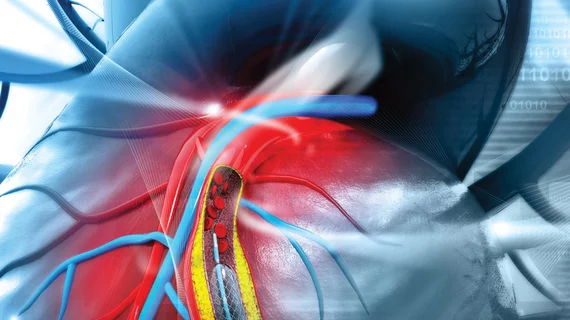‘A win-win for everyone’: Ultrasound technique provides improved arrhythmia assessments
A noninvasive ultrasound imaging technique can help healthcare providers localize atrial and ventricular cardiac arrhythmias, according to new research published in Science Translational Medicine. Could this method be added to clinical workflows in the near future?
The study’s authors noted that 12-lead electrocardiograms (ECGs) represent “the current noninvasive clinical tool”—so they compared the performance of their technique, electromechanical wave imaging (EWI), with ECGs in a double-blinded clinical study. The researchers reviewed EWI scans of 55 patients who underwent catheter ablation procedures, retrospectively comparing EWI maps with 12-lead ECG assessments made by one of six experienced electrophysiologists.
Overall, the EWI maps predicted 96% of arrhythmia locations. The ECG assessments, meanwhile, predicted 71%.
“We knew EWI was feasible in individual patients and we wanted to see if it made a difference in the clinical setting where they treat many people with different types of arrhythmias,” co-author Elisa E. Konofagou, PhD, Robert and Margaret Hariri Professor of Biomedical Engineering and Radiology at Columbia University Medical Center in New York City, said in a prepared statement.
“It’s really clear now that, when used in conjunction with standard 12-lead ECG, EWI can be a valuable tool for diagnosis, clinical decision making, and treatment planning of patients with arrhythmias,” co-first author Lea Melki, a PhD student in the department of biomedical engineering at Columbia University, said in the same statement. “We believe our EWI technique, with minimal training, will result in higher accuracy in the site of ablation, a faster procedure, and fewer complications and repeat visits after the procedure. This is a win-win for everyone, both patients and clinicians.”
The researchers are now planning a long-term clinical study to follow up on these findings. That study is scheduled to begin sometime in 2020.

